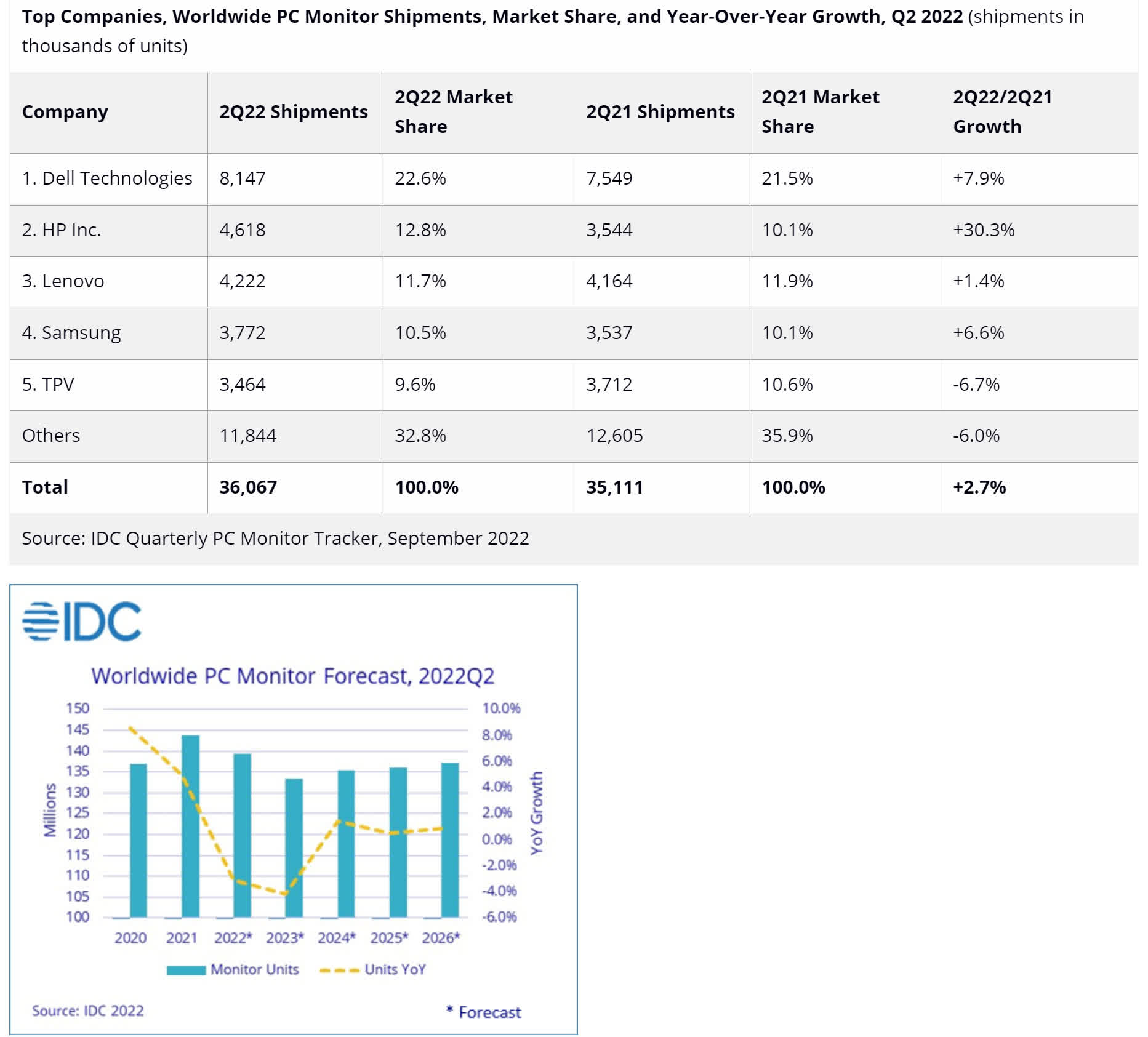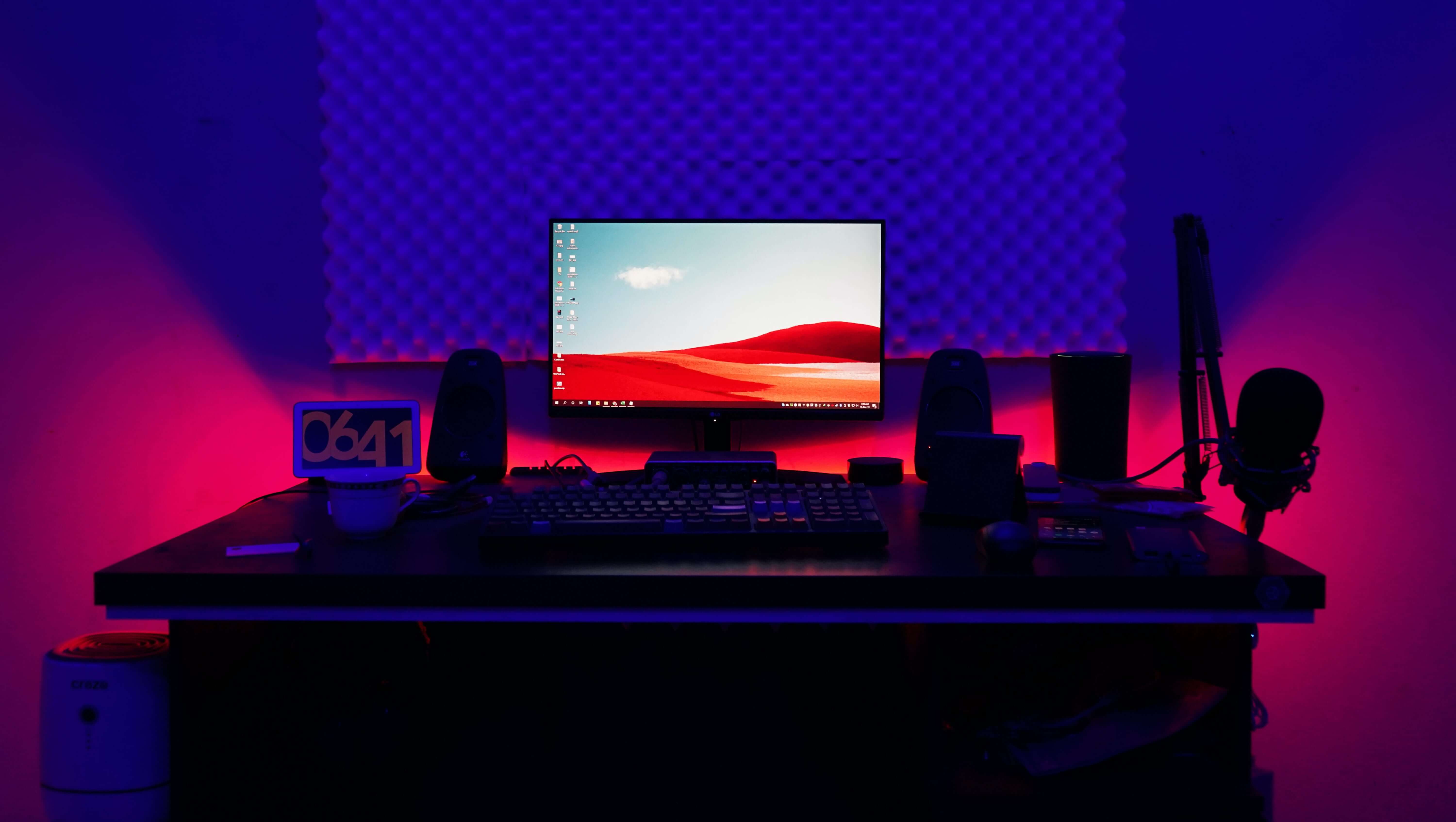In a nutshell: A post-pandemic hangover is dropping demand for PC components across the board, but those negative numbers haven't appeared for monitors. The global market in that sector posted modest gains in Q2, but analysts predict hard times are ahead.
A new International Data Corporation (IDC) report shows a Q2 2022 growth of 2.7 percent in global monitor shipments compared to Q2 2021. The numbers contrast with the current falling demand for PCs and other computer components, at least for now.
In emerging markets outside China and Russia, growth exceeded 16 percent, contributing significantly to the global increase. The company that benefitted the most was HP, which saw a 30.3 percent year-over-year rise in shipments. All other manufacturers only saw single-digit changes. Dell maintains the largest market share of the most prominent monitor vendors, with 22.6 percent.
The growth in monitor shipments will likely not last, as other components like graphics cards and SSDs already show falling demand and prices going into Q3 and Q4. Analysts already report rising monitor inventory stocks in multiple territories.

Global monitor shipments for all of 2022 may fall by 3.1 percent compared to 2021 and a further 4.1 percent in 2023. Most of that descent will come from China --- the number-two market for monitors --- which is projected for an unprecedented 19 percent decline. As the dust settles in the back-and-forth between office work and work-from-home, a transition to hybrid employment may stabilize the market by late 2023, leading to a minor recovery by 2024.
The GPU market decline is already affecting monitors for at least one retailer. Earlier this month, Newegg bundled gaming monitors with graphics cards out of desperation to clear GPU stock before new products like Nvidia's Ada Lovelace, AMD's RDNA3, and Intel's Arc Alchemist arrive.
If monitors eventually face the same price pressure currently hitting GPUs and SSDs, they could become one more factor making late 2022 an excellent time to build or upgrade a PC, along with the host of new CPUs launching soon. However, factors like product competition and a possible looming macroeconomic recession make price projections for 2023 challenging at this stage.
